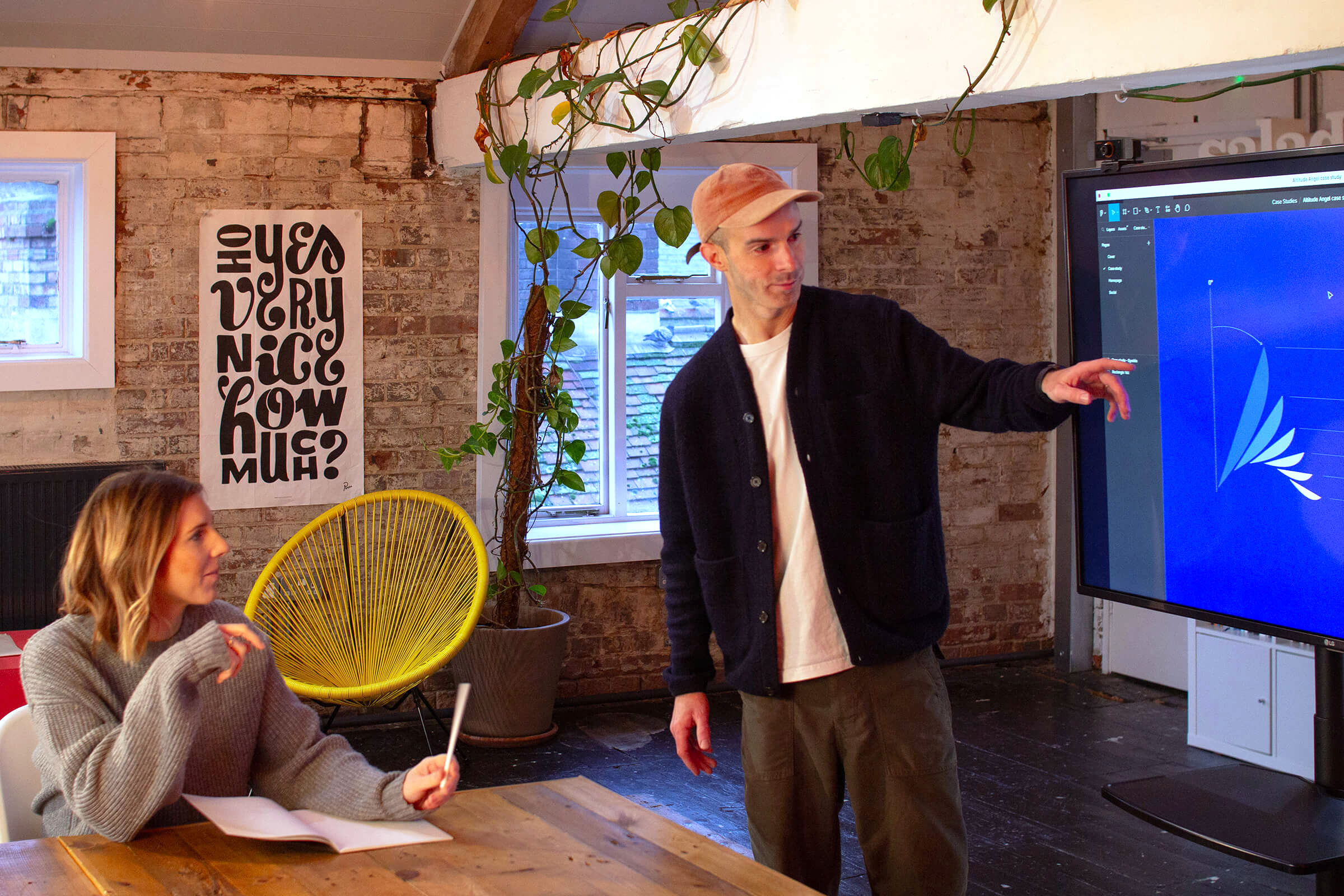A designer’s top tips for calming presentation nerves
It's not far off 20 years I've been working in design but dealing with the pre-match nerves before a presentation (big or small) is still very real. I had hoped it would be much easier by now and although practise does help, there's an art to channelling the inevitable surge of adrenaline that I'm still learning to master but here are a few tips I've learned along the way...

Every presentation is different. Every presentation is the same.
Every client and every project is unique, but building a story and structure around the presentation is always important. Creating a narrative and flow that guides the client through the project will help them to understand the journey you have taken to arrive at the final creative solution, and will also help build a story that is familiar and easy to retell.
Sink or script
Although many people like to use a script I find it can really trip me up. That said, I need to go through the process of writing out what I want to cover as a way to organise my thoughts. The next step is to distil those notes down to a few keywords that I can use as prompts.
I can’t be the only one who’s covered their laptop screen with Post-it notes for a Zoom call.
Set up and summary
It’s always worth giving a little extra polish to how you plan to open and close. Having a strong start will help settle the nerves of everyone in the room and set the tone for the rest of the presentation. Equally, drawing things to a compelling conclusion frames the conversation and feedback that follows.
Practise, Practise, Practise
Whether with colleagues or just your cat, practising out loud is so important. There’s no substitute for verbalising the presentation to make sure you are familiar with what you want to say, and how you want to say it. Recently we have started hosting studio visits for AUB which involves presenting our work to the students. This has been a great opportunity to practise and try out a few ideas without the usual pressure.
Find your place to experiment. Remember there’s no set formula. Do it your way and have some fun.
Keep it clean
When building presentations, I try to avoid including too much supporting copy on each slide. You want the creative to have a real impact, and text can just become distracting for both you and the client. Ideally, there is another version of the deck with annotations that can be sent as a follow-up.
It’s a team sport
If you’re part of a project team, it works well to break down the presentation into sections which can be divided out. This gives you a good opportunity to gather your thoughts when you pass the baton, and changing things up as you go is a good way to keep everybody engaged.
And asking a colleague to give you honest feedback can be really valuable – having someone who can give another perspective is a great insight and also provides some accountability. You can task them with offering the occasional head nod to encourage you along or chipping in if you get stuck to allow you time to regroup.
Take a deep breath
For me, the nerves begin to show up about 5 minutes before the meeting is due to kick off and that’s usually a good prompt to put my notes down and just take a deep breath. By this point I’ve poured over every last detail of the brief, it’s now time to back myself and the work.
Question time
I often like to invite questions as we go to create a conversation around the project. This helps build a collaborative relationship and also shifts the spotlight away from me and onto the work.
Tumbleweed torture
When we hit the final slide and the floor is open for feedback, you never know what the initial reaction will be. Some clients are really encouraging and engaged throughout and will quickly offer a positive reaction, but many clients will keep their poker face on throughout, and you can be met with the terrifying sound of tumbleweed.
Don’t be scared of the silence, it helps to remember that many people are internal processors and are often unfamiliar with the creative process so will need time to gather their thoughts. Don’t be discouraged, this isn’t a reflection of the work or your presentation.
Listen and learn
I have found it really helpful to get out and see other people presenting. Nicer Tuesdays and First Round have both been inspiring. Watching other creatives presenting their work is a great way to learn and borrow tips and tricks, and be reminded that there are lots of different ways to present.
Rewind
One of the great advantages of online presentations is the ability to record the session. This is helpful for stakeholders who can’t join, but it’s also worth watching back. You will quickly spot all the errs and umm’s and other bad habits, but it will hopefully also reveal areas that work well. It’s as excruciating as it sounds, but, no pain no gain.
Calming your presentation nerves
This is by no means a step-by-step guide for presenting – Simon Dixon has done a great job of that on his LinkedIn, but hopefully, I can encourage any designers out there, at any stage of their career, that presentation nerves are ok, and there is a way to navigate them.
Find your style and try to enjoy the ride (easier said than done!).





